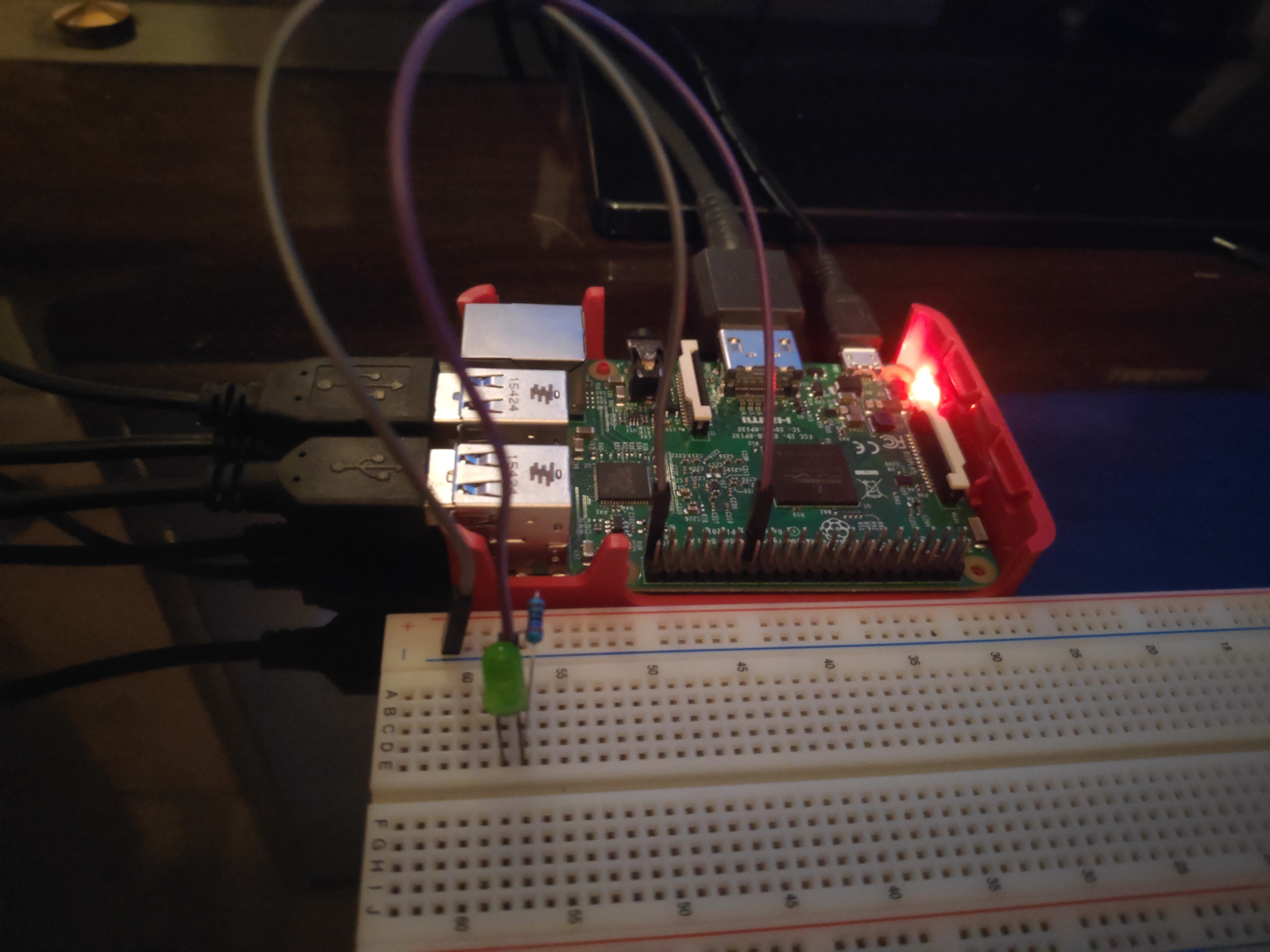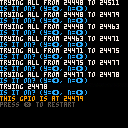Hi, I'm ghettobastler ! I make stuff using electronics and programming, and recently I became interested in PICO-8 because of its ability to control a Raspberry Pi's GPIO from within a game.
I read that this was done by using peek() and poke() on an address in the 0x5f80..0x5fff range, but unfortunately, I was not able to find the exact mapping online (i.e. which particular address corresponds to a given GPIO pin). So I made this tool to help me figure that out.
This is meant to be used on a Raspberry Pi or a similar board that has GPIO pins. It will not work in a browser or on a computer (I mean it will run... but there isn't any point in doing that)
It is pretty bare-bones, but it does the job. To use it, connect an LED and a resistor to one of the GPIO and run the cartridge (see this guide if you don't know how to do that).

This tool works by performing a dichotomic search to find the address that matches a particular GPIO pin:
- At the start, half of the 0x5f80..0x5fff range is turned ON, and the other half is turned OFF. The program then asks the user if the LED they connected is on.
- If it is, the process repeats, but only on the first half of the range
- If it's not, the program uses the other half of the range
This goes on until only one address remains.
I ran this tool on my Raspberry Pi and found this mapping:
- GPIO 0 (pin 27): 0x5f9e
- GPIO 1 (pin 28): 0x5f9f
- GPIO 2 (pin 3): 0x5f88
- GPIO 3 (pin 5): 0x5f89
- GPIO 4 (pin 7): 0x5f87
- GPIO 5 (pin 29): 0x5f95
- GPIO 6 (pin 31): 0x5f96
- GPIO 7 (pin 26): 0x5f8b
- GPIO 8 (pin 24): 0x5f8a
- GPIO 9 (pin 21): 0x5f8d
- GPIO 10 (pin 19): 0x5f8c
- GPIO 11 (pin 23): 0x5f8e
- GPIO 12 (pin 32): 0x5f9a
- GPIO 13 (pin 33): 0x5f97
- GPIO 14 (pin 8): 0x5f8f
- GPIO 15 (pin 10): 0x5f90
- GPIO 16 (pin 36): 0x5f9b
- GPIO 17 (pin 11): 0x5f80
- GPIO 18 (pin 12): 0x5f81
- GPIO 19 (pin 35): 0x5f98
- GPIO 20 (pin 38): 0x5f9c
- GPIO 21 (pin 40): 0x5f9d
- GPIO 22 (pin 15): 0x5f83
- GPIO 23 (pin 16): 0x5f84
- GPIO 24 (pin 18): 0x5f85
- GPIO 25 (pin 22): 0x5f86
- GPIO 26 (pin 37): 0x5f99
- GPIO 27 (pin 13): 0x5f82
You can use this mapping as is on your Pi, but I cannot guarantee that it is consistent across all models (I used a Raspberry Pi 3).
I hope this is useful, have a nice day !

The documentation is here: https://www.lexaloffle.com/dl/docs/pico-8_manual.html#GPIO
Specifically:
> Raspberry Pi: 0x5f80..0x5f9f mapped to wiringPi pins 0..31
> // see http://wiringpi.com/pins/ for mappings on different models.

Dang, I did not check the manual... 😔
Thank you, that's exactly what I was looking for !
[Please log in to post a comment]







